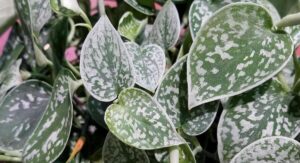
As more of us spend time indoors, finding ways to cleanse the air in our homes is important for health and well-being. Luckily, various plants have evolved to naturally remove toxins and pollutants from the air we breathe. These are the most effective indoor plants for air purification.
Scientific studies have shown that certain common houseplants can help rid indoor air of chemicals released by materials, cleaning products, and other household items. Plants act as natural air filters through transpiration – releasing water vapor carrying pollutants through tiny leaf pores.
Some top-performing options include:
In this article
English Ivy

Easy to care for and tolerant of low light, English Ivy (Hedera helix) is a wonderful broadleaf plant for indoor air revitalization. It boasts the ability to remove benzene, formaldehyde, trichloroethylene, and xylene from inhabited spaces. I’ve been growing ivy in basic potting soil by a window.
Peace Lily

Featuring gorgeous white blooms, Peace Lily (Spathiphyllum) serves a functional purpose beyond its beauty. This plant is proven to scrub the air of toxins like ammonia, benzene, and formaldehyde. My sister keeps happily thriving in a corner of my living room with partial sun
Bamboo Palm

With its full leaves resembling bamboo, the Bamboo Palm (Chamaedorea seifrizii) is great at withdrawing multiple pollutants including benzene and trichloroethylene. Mine has grown for years, requiring nothing more than average care in a spot with indirect sunlight.
Chinese Evergreen

Chinese Evergreens (Aglaonema) add visual interest while actively filtering indoor airborne toxins like benzene, trichloroethylene, and formaldehyde. They do well in medium to low light conditions, providing beautiful touches to my desk with minimal upkeep.
Spider Plant

With their striped leaves and cute miniature plants growing from stout stems, Spider Plants (Chlorophytum comosum) create a lush, tropical appearance. They are among the top indoor plants for removing chemicals like trichloroethylene and formaldehyde. Propagating baby plantlets is super easy and make great gifts.
Mother-in-Law’s Tongue

Mother-in-law’s Tongue (Sansevieria trifasciata) creates a striking jungle effect stiff, upright sword-shaped leaves sporting white and grey coloration. It also removes chemicals like trichloroethylene, formaldehyde, and xylene from indoor air. These plants are low-maintenance and ideal for beginners.
Snake Plant

With stiff, upright sword-shaped leaves in hues like green with white stripes, Snake Plants (Sansevieria trifasciata) create a striking jungle effect. They also top many lists as a great air-purifying plant for removing chemicals like trichloroethylene, formaldehyde, and xylene and release oxygen and add moisture to the air, reducing allergens like dust and dander, contributing to easier breathing and better air quality.
Areca Palm

The Areca Palm (Dypsis lutescens) has a dramatic presence with its stately trunk and crown of glossy fronds. It has earned kudos for removing common household toxins like benzene, formaldehyde, and trichloroethylene from the air. I grow mine to bring height to my entryway with minimal care needs beyond bright, indirect sunshine.
Golden Pothos

The vining Golden Pothos (Epipremnum aureum) has gained fame as a powerful agent for removing indoor air toxins like formaldehyde, benzene, and trichloroethylene. Its ability to climb or trail makes it suitable for draping up walls or along bookshelves and shelves. Mine thrives with infrequent watering near a kitchen window.
YOU MIGHT ALSO LIKE: My Top 5 Beautiful Houseplants
While bringing a zoo’s worth of greenery inside can make for a healthier living space, it’s important not to go overboard! Too many plants in a closed room could cause humidity issues that cultivate mold growth.
Some experimentation may be necessary to find options that complement your living arrangements while actively purifying the air throughout your indoor domains.
Maximize the air-cleaning benefits of houseplants by:
- Choosing a variety of plant types to tackle a range of toxins rather than relying on only one or two.
- Group purifying plants in high-traffic areas like living rooms where indoor contaminants tend to concentrate.
- Providing sufficient light to support photosynthesis and maximize the phytoremediation process.
- Distributing plants uniformly rather than clustering all in one room or area to broaden their cleaning reach.
- Regularly removing dust from leaves to keep toxins from accumulating rather than being transpired away.
With a little care, these plants can contribute to your home’s atmosphere in more ways than just aesthetically. By learning which options remove what contaminants of concern, you can select species tailored to routinely scrub your air and enhance the air quality wherever you spend your time indoors.
RELATED: 15 Herb Garden Ideas That Don’t Need a Windowsill







